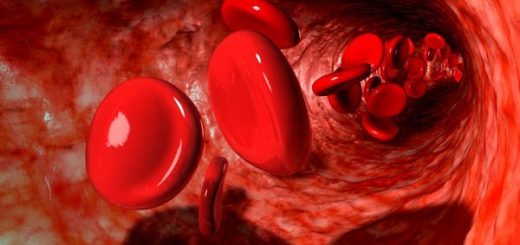
September is the month where we celebrate Baby Safety, Blood Cancer Awareness, Childhood Cancer, and Prostate Health Month. There are many other observances that get the recognition and funding that awareness brings. One specific illness that is recognized in September that doesn’t receive the recognition and funding needed to develop more treatments, cures and awareness is Sickle Cell Anemia or Sickle Cell Disease. September is Sickle Cell Awareness Month.
Sickle Cell Anemia, or Sickle Cell Disease (SCD), is the most prevalent genetic inherited disease in the world. Annually, in the United States, 1 in 375 African Americans are born with Sickle Cell Disease. While thought to be a disease that only affects African Americans, SCD is found in regions where people are prone to Malaria. This means that places where you find malaria, you will also find the gene variant for SCD.
Sickle Cell Disease is most common in people of African descent and Mediterranean countries such as Italy, Turkey and Greece. SCD can also be found in people who originated around the Arabian peninsula, Indian and Spanish speaking regions in South America, Central America and some areas in the Caribbean. Currently, the majority of Sickle Cell patients are African American. But the myth that it only affects African Americans is not true.
Awareness Month
The annual observance of Sickle Cell Awareness Month began in 1975 when the National Association for Sickle Cell Disease (NASCD) and its member organizations began hosting month long events to raise awareness about the disease. These events were also geared towards addressing SCD at a national level. These efforts included public education and fundraising activities. NASCD is now known as the Sickle Cell Disease Association of America (SCDAA). In 1976, SCDAA began a tradition of selecting a national poster child (now named a child ambassador). Annually, since Gerald Ford was President, the U.S. President would greet the national ambassador. The current Ambassador is Kiarra Roseburgh from Pennsylvania who was elected in 2017.
It was not until 1983 when Sickle Cell Disease Awareness Month was recognized on more than just a national level. The Congressional Black Caucus of the House of Representatives unanimously passed a resolution asking then President Ronald Reagan to issue a proclamation declaring September as “National Sickle Cell Anemia Awareness Month.” Proclamation 5102 was signed in September 1983. In 2002, The Sickle Cell Disease Association of Illinois (SCDAI) petitioned Governor Thompson to proclaim September as Sickle Cell Awareness Month in Illinois.
Chicago Connection
According to a written history by William P. Winter Ph.D., and the Sickle Cell Association of Ontario, Sickle Cell Disease was first named in 1910 but has been present in Africa for hundreds of years. Walter Clement Noel, a dentistry student from Grenada who was studying in Chicago, went to see Dr. James Herrick in 1904 at Presbyterian Hospital with complaints of severe respiratory distress and a leg ulcer, both now known as symptoms of SCD. During his time in dental school, Noel was admitted several more times before he returned to Grenada to practice dentistry. Herrick, who was a cardiologist, referred Noel to a medical resident, Dr. Ernest Irons. When Irons viewed Noel’s blood under a microscope, he saw red blood cells in the shape of sickles. Herrick renewed his interest in the Noel case due to the possibility of a medical breakthrough.
Further Discoveries
In 1922, Dr. V.R. Mason, who treated the 4th case of Sickle Cell Disease was the first to refer to the illness as “Sickle Cell Amenia.” He noticed that the similarities between his patient and the three previous patients that were known to have similar symptoms were all Black, which led to the misconception that sickle cell originated from people of African origin.
In 1927, Vernon Hahn and Elizabeth Biermann Gillespie discovered that red blood cells from persons with the disease could be made to sickle by removing oxygen. This was exciting because red cells are the oxygen transporters of the body. The trouble was that there were people –often relatives of the patient – whose red cells had this trait of sickling when deprived of oxygen but who had no disease. This condition became known as “sickle trait.”
Modern research on Sickle Cell Disease is credited to Linus Pauling. In 1949 Pauling introduced the term “molecular disease,” which has been widely used in discussing Sickle Cell Disease.
Healthy blood cells carry blood from the lungs to other tissues and organs in the body. In individuals with Sickle Cell normal blood cells form a sickle shape which sticks to the walls of various blood vessels which blocks blood flow resulting in pain, organ damage and infections.

Normal cell on left; Sickle cell on right
How to Diagnose
There are several tests that can determine whether or not a person has Sickle Cell Disease. No matter what test is used, experts agree that early detection is important. Early detection can reduce the likelihood that patients born with sickle cell anemia suffer from bacterial infections, pneumonia and other complications. Early diagnosis will also make sure that parents receive genetic counseling and other information needed to manage their child’s illness.
In 1972, the Sickle Cell Anemia Control Act was enacted and increased federal interest in the illness. However, it was not until May 1, 2006, that all states were required to provide newborn screenings for Sickle Cell Disease despite the fact that this newborn screening was recommended as a national effort in 1987.
In older adults, or those born before April 30, 2006, Sickle Cell can be diagnosed by a blood test, sent to a laboratory to screen for hemoglobin S, the hemoglobin that detects the incidence of Sickle Cell Disease. If the test is positive, further testing needs to be conducted to determine which sickle genes are present.
Symptoms and Treatment
What is most commonly know as a symptom of Sickle Cell disease is severe pain. Many patients have described the pain as feeling as if someone is crushing their bones. In addition to this often-debilitating pain, patients also suffer from chronic hemolytic anemia, multisystem organ damage and an increased risk of stroke. African American Sickle cell patients also have a shortened life expectancy which is 30 years less than the life expectancy of other African Americans.
New therapies have been developed to increase the life expectancy of patients with Sickle Cell Disease and they continue to be developed. In the early 1980s it was determined that penicillin was a preventative method to reduce pneumococcal infections in patients with Sickle Cell Disease. It was also noted that if Sickle Cell patients were given penicillin early in childhood that these pneumococcal infections could be prevented later in life.
In most cases, treatment for SCD is designed to help the patient avoid pain crises. Treatment is also focused on preventing complications and relieving symptoms cause by the illness. Treatments include pain medications and blood transfusion. Hydroxyurea, a drug used to reduce the frequency of pain crises, is also a treatment for SCD.
According to the Center for Disease Control and Prevention (CDC), from birth to age 2, children should be closely monitored by their physicians, and those older than 2 should see their doctors at least once a year, and more frequently if they are not feeling well.
Bone Marrow transplantation or stem cell transplant is also being used to cure Sickle Cell Disease. This requires the bone marrow of a sickle cell patient to be replaced with healthy bone marrow from a person who does not have sickle cell disease. There are several medical institutions offering this treatment and individuals with Sickle Cell Disease should find a specialist that can advise them if transplantation is a viable treatment for them.
Treatment and therapies are still being developed. There are several facilities in the Chicago area and nationally, where you can see physicians that specialize in the treatment and management of Sickle Cell Disease. To find out what you can do to bring further awareness about this illness to others you can contact one of the medical facilities or you can contact the Sickle Cell Disease Association of Illinois (SCDAI).




A fascinating discussion is worth comment. I believe that you need to write more about this subject, it might not be a taboo subject but usually people do not discuss these subjects. To the next! Many thanks!!
Noted dear Thanks